The Orpheum Theater (Cinema Theater)
Introduction
Text-to-speech Audio
Images
4th Avenue looking west, circa 1915
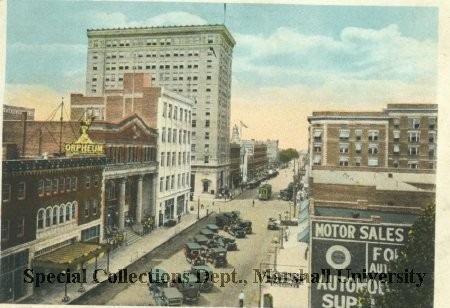
4th Ave between 11 & 10th streets, facing west, circa 1920s
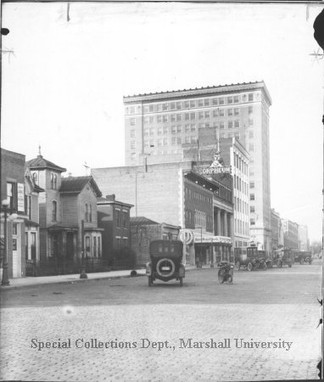
Interior of the Orpheum Theater, date unknown
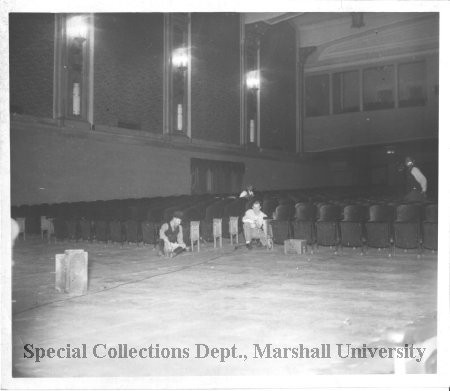
4th Avenue theaters, circa 1930s
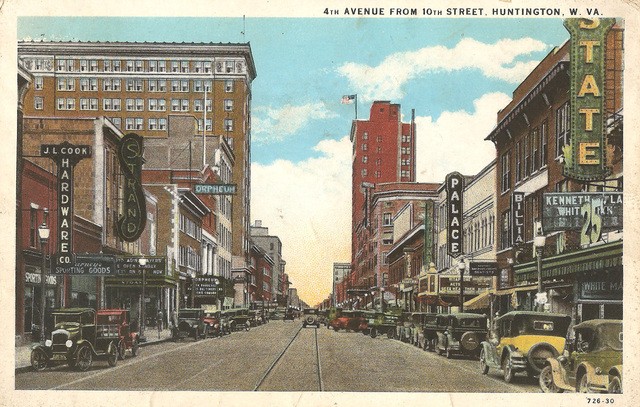
The Orpheum in 1937
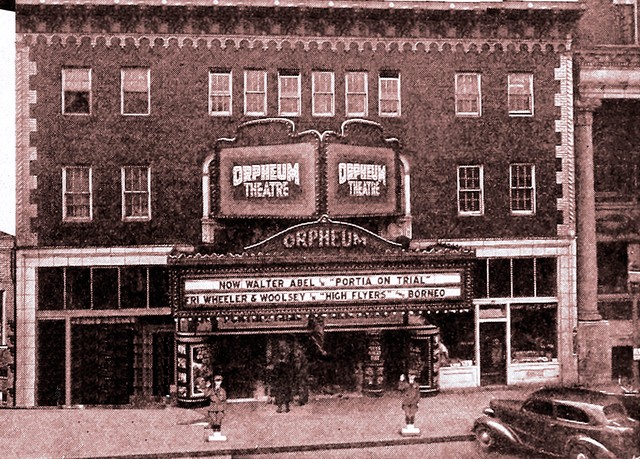
The theater entrance during the flood of 1937
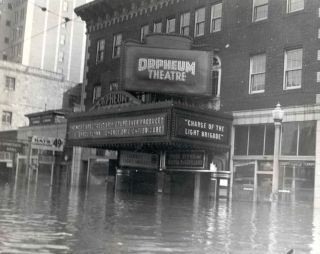
The Orpheum during the flood of 1937
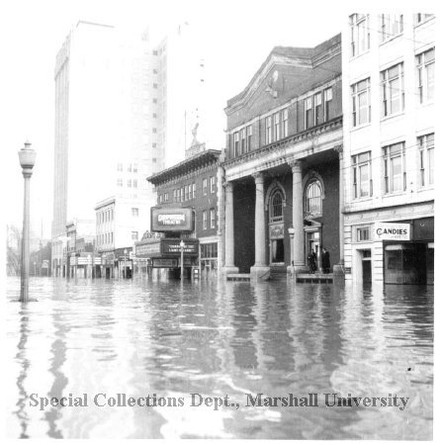
4th Avenue during the flood of 1937
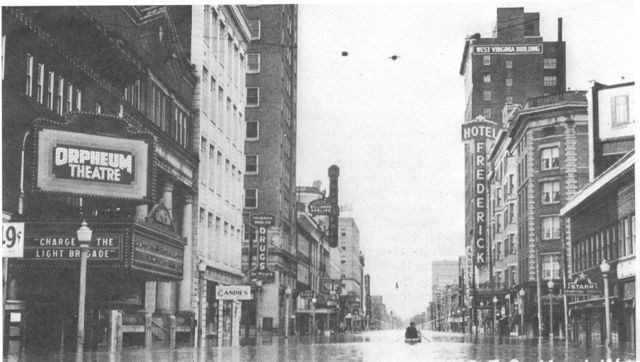
The Orpheum during a parade in 1947

The Orpheum, at left, next to the Elks Lodge, circa 1950

The Cinema in 2011
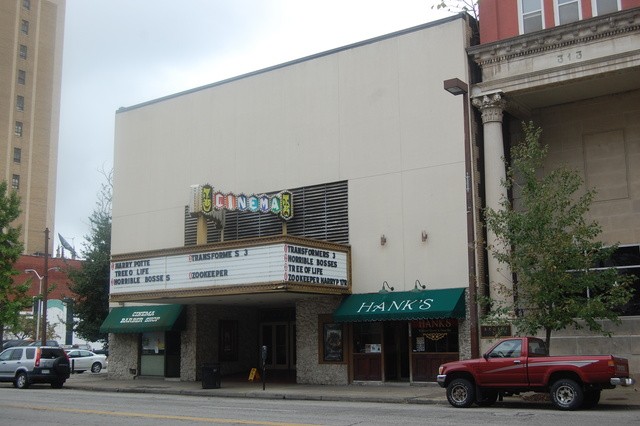
The former theater's marquee as it is today
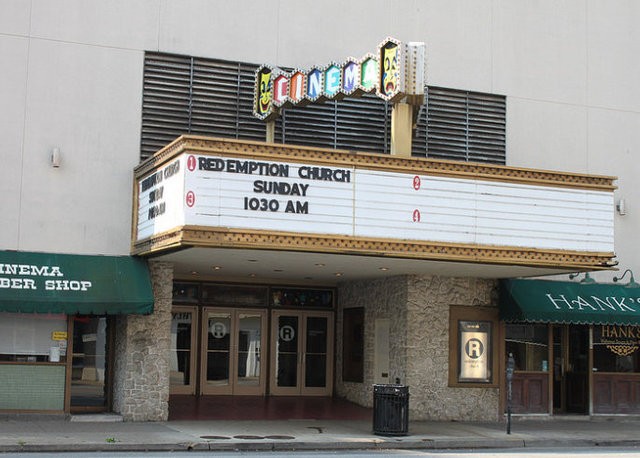
Backstory and Context
Text-to-speech Audio
In September 1915, prominent businessman and Ritter Park namesake C. Lloyd Ritter announced his plans to construct a movie theater next door to the Huntington Elks Lodge on 4th Avenue. The new theater would be affiliated with the Orpheum circuit of cinemas and vaudeville houses, and would be leased to a group of theater owners from Ohio. Ritter hired esteemed Huntington architect Verus T. Ritter to design the 1,600-seat theater at a cost of $75,000 - nearly $2 million in today’s dollars. The building had three floors, with the upper stories above the ground-floor lobby and storerooms laid out for luxury apartments. The Orpheum’s entrance and lobby were fitted with marble, terra cotta, and ornamental plaster, and the auditorium’s walls were intricately decorated to depict a pastoral scene. In addition to its elaborate decoration, the theater touted its state-of-the-art heating and ventilation equipment, sprinkler system, and projection machines. It also featured 40 autoboxes of 10 seats that moviegoers could reserve ahead of time in order to enjoy the film in a group.
The Orpheum opened on the night of March 20, 1916 with the movie “Peggy” and a live orchestra accompanying the silent film. Although the Orpheum was meant to primarily serve as a movie theater, its stage was large enough to accommodate live performances as well. Since vaudeville was still popular at the time, it was not uncommon for theaters to feature both vaudeville acts and films, although the Orpheum would eventually show movies exclusively. In March 1917, the Hyman family took over ownership of the theater. The Hymans, who founded the Greater Huntington Theatre Corporation, operated two other Huntington theaters at the time. In the years following their purchase of the Orpheum, they bought or constructed several others, including the celebrated Keith Albee, in downtown Huntington.
Huntington's 4th Avenue was lined with theaters for many decades. Over the years, these theaters evolved alongside wider changes in economic and social circumstances: though many were designed as grandiose vaudeville or movie houses, each theater eventually came to be known for showing certain types of movies or catering to a certain audience. During the era of segregation, for instance, the Orpheum was reportedly the only theater open to Huntington’s African Americans, who were required to sit on the balcony level, even when the rest of the auditorium was empty.
During the late 1960s or early 1970s, the Orpheum was renamed the Cinema Theater and its auditorium was subdivided into four small theaters. This was likely in response to the trend toward multi-screen cinemas, as it became common for theaters to screen multiple movies at once. As was the case with many of the other 4th Avenue theaters, however, business at the Orpheum declined significantly over time. One by one, the Hyman family closed its Huntington theaters as newer theaters were built and the popularity of Huntington’s downtown declined. For many years, the Cinema stayed afloat as a discount theater showing second-run movies. It offered many specials to attract customers, including free movies for children during the summer, "Flashback Mondays" when they showed classic movies, and "$2 Tuesdays."
However, with the overwhelming popularity of first-run theaters and the widespread availability of DVDs and streaming services, the Cinema continued to lose its appeal to Huntington moviegoers despite all of the deals it offered. In November 2011, the Cinema Theater became the last of the Hyman family’s downtown theaters to close. Following its closure, Redemption Church purchased the former theater, which it continues to occupy today. The church has preserved the Cinema’s colorful marquee, although it now advertises Sunday services instead of movie showtimes.
Sources
Casto, James E.. "Lost Huntington: The Orpheum Theater." Herald-Dispatch (Huntington) December 28th 2015. https://www.herald-dispatch.com/special/lost_huntington/lost-huntington-the-orpheum-theater/article_444d39a8-f905-574d-bc50-d24f034cede3.html
Hardiman, Jean Tarbett. "Downtown Huntington cinema closes doors." Herald-Dispatch (Huntington) November 4th 2011. https://www.herald-dispatch.com/news/recent_news/downtown-huntington-cinema-closes-doors/article_f0e3afb0-41ed-53d1-999f-ac96453e3757.html
Stewart, H. A.. "Dixie's Finest Theater." Motography, vol. 15, 817 - 818. Published April 8th 1916. https://books.google.com/books?id=a3lJAQAAMAAJ&pg=PA817&lpg=PA817&dq=orpheum+theater+huntington+wv&source=bl&ots=iWBHXYy8rT&sig=ACfU3U0dad_UTDHZPv-vFJsy301CfuAGqQ&hl=en&sa=X&ved=2ahUKEwjep7fkx9jlAhVOd6wKHTQRCdk4ChDoATACegQICRAB#v=onepage&q=orpheum%20theater%20huntington%20wv&f=false
https://marshall.pastperfectonline.com/photo/251C45C2-D015-4313-9979-712156460748
https://marshall.pastperfectonline.com/photo/B7F816CF-F394-4BCA-855E-588035942852
https://marshall.pastperfectonline.com/photo/59CE95C8-9FB2-4CCE-9906-568856043711
https://www.wvencyclopedia.org/exhibits/26?section=21
http://cinematreasures.org/theaters/677/photos/199277
http://cinematreasures.org/theaters/677/photos/33683
https://marshall.pastperfectonline.com/photo/B8118D69-D532-4D53-905B-221694962292
http://cinematreasures.org/theaters/677/photos/248788
http://cinematreasures.org/theaters/677/photos/156340
https://marshall.pastperfectonline.com/photo/CEC7B9E1-877F-4F33-9951-625413369238
http://cinematreasures.org/theaters/677/photos/25806
http://cinematreasures.org/theaters/677/photos/112400
